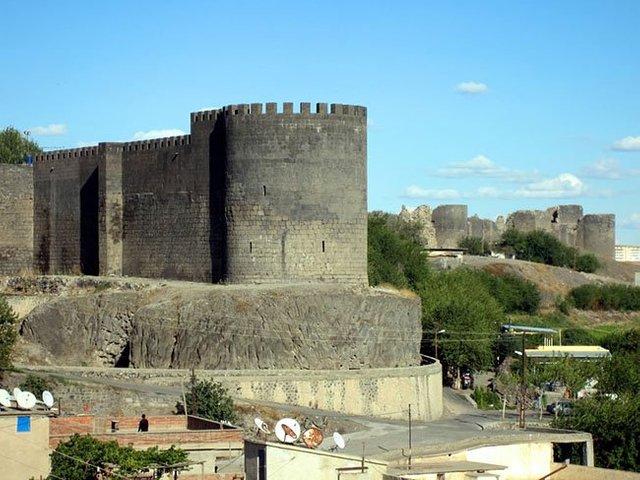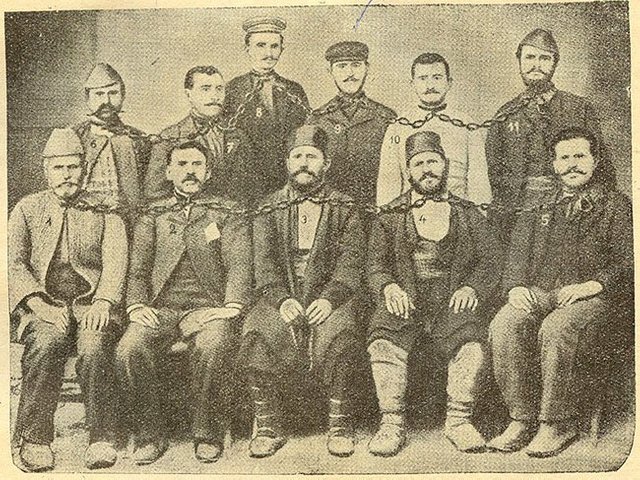I think none of you know that the Turkish resort of Diyarbakir still arouses hostility among Bulgarians. Because there was one of the most terrible prisons, where during the time of the Ottoman yoke the rebellious Bulgarian figures were kept. So, if you meet a Bulgarian girl, you do not have to promise her that you will take her to the resort of Diyarbakir. Although, as you know, you may be lucky, and you will meet a girl who studied poorly at school.
In time immemorial, this place was called Amida, and after 639, the Arabs who captured it gave a new name to the city - Diyar-i-Bekr. In 1516, the fortress entered the Ottoman Empire and subsequently turned into one of the Turkish prisons. All thanks to its high and strong walls, built back in the Roman Empire. The width of the basalt walls of this building reached five meters, and the height - up to twelve; more than 80 watch towers, additional walls and a moat made this place practically impregnable and also very difficult to escape. The prisoners were kept chained, not only by the legs, but also by the neck - two people each and 10 each, to minimize the possibility of escape. Here they sat for decades and died. This place was described by many Bulgarian prisoners as a space of horror and death.

However, escapes were also made from this prison, and all thanks to the fact that Armenians lived in Diyarbakir, who, too, as Christians, sympathized with the imprisoned Bulgarians (and not only).
One of these fugitives is the Bulgarian revolutionary Stoyan Zaimov, the father of the future Bulgarian military-political figure Vladimir Zaimov. And also Atanas Uzumov - a companion of Vasil Levski, he fled with a passport of the Polish emigrant Benkowski. This passport later fell into the hands of Gavrila Khlytev, who took the name of Georgi Benkovsky and remained with him in the history of Bulgaria, as the main leader and hero of the April Uprising.
Macedonian prisoners in Diyarbakir, 1903-1904. An example of constraint

In Diyarbakir, Mincio Kinchev, a well-known Bulgarian revolutionary priest, was imprisoned. Here he wrote his manuscript book “Vidritsa”, in which he expressed his warm gratitude to the Christians of Diyarbakir who helped the Bulgarian prisoners. Pop himself could not escape from prison, but was released in 1878 under a general amnesty after the victory of Russia in the Russo-Turkish war. Under the San Stefano Treaty, the political prisoners of the Bulgarians were amnestied and on April 4, 1878, pop Mincho Kinchev and pop Dimitar served a farewell church service in Diyarbakir in the church "Saints Krezma and Damyan". This service was attended by all Bulgarian prisoners and Christians imprisoned in Diyarbakir.
Diyarbakir is mentioned in many Bulgarian works of art. In particular, in the novel by Ivan Vazov "Under the Igoto."
Thank you for your time and attention.
Follow me for more content to come!
My telegram channel https://t.me/varyadavydovabg
Congratulations, Your Post Has Been Added To The Steemit Worldmap!
Author link: http://steemitworldmap.com?author=varya-davydova
Post link: http://steemitworldmap.com?post=diyarbakir-a-place-of-sorrow-for-the-bulgarians
Want to have your post on the map too?
Downvoting a post can decrease pending rewards and make it less visible. Common reasons:
Submit